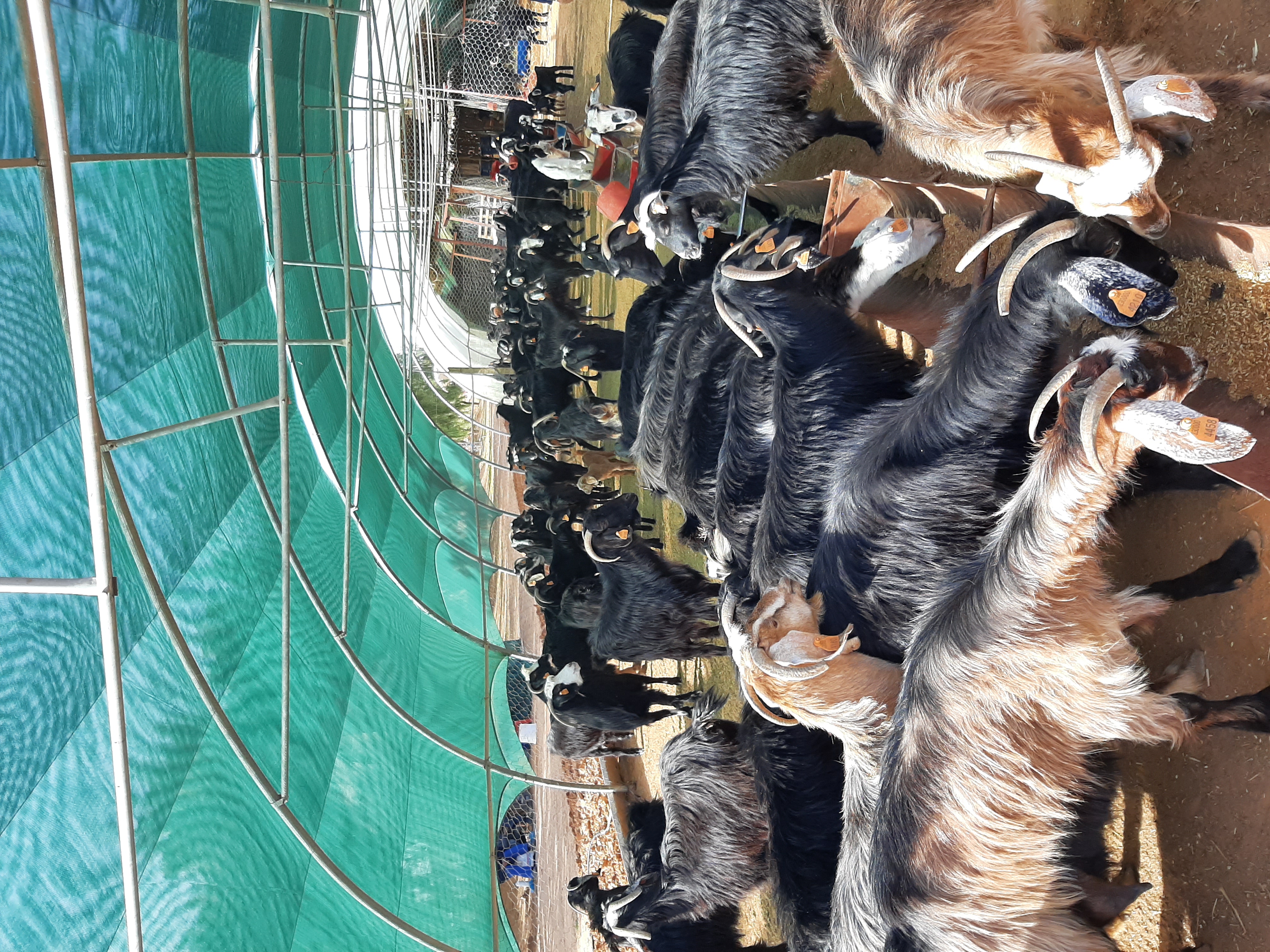Weights of caprine kids of the local Southern Tunisian population under arid conditions: Impacts during selection process
DOI:
https://doi.org/10.19182/remvt.36375Keywords
goat, livestock systems, growth, selection, environmental factors, TunisiaAbstract
The nature and distribution of quantitative phenotypes represent a basic knowledge for the application of genetic methodologies in domestic animal selection plans. To illustrate the action of non-genetic factors of aridity on the phenotypic distribution of individual growth performance of caprine kids of the local population reared under restrictive and irregular conditions, 945 kids from 285 female goats and 19 male goats, born during the period 1998–2014, were studied by analyzing weight distributions up to 150 days of age. The weight dispersion represented a collective expression of the genotypes of the kids under the study conditions with variations due to both genetic and environmental effects. The assumption of normality was only confirmed at 10 days and 30 days of age when kids were mainly fed under the mother and were not directly dependent on dry land feed resources. In an unfavorable year, the recorded performance followed a particular distribution explained by the fact that performing kids were unable to externalize their superiority. Therefore, the dry land environment reduced the performance of the local goat population. In addition, it limited the expression of some highly productive genotypes. The specificity of the action of the arid environment calls for an in-depth study to adjust the selection methods to the conditions of the restrictive environments and of the adapted genetic groups.
Downloads
References
Atoui A., Carabaño M.-J., Diaz C., Najari S., 2019. Genetic analysis of live weight of local kids to promote genetic evaluations in the arid areas of Tunisia. Trop. Anim. Health Prod., 1 (10): 1-14
Dekkers J., 2002. Models for genetic analysis of longitudinal data. University of Guelph, Canada
Falconer D.S., 1989. Introduction to quantitative genetics. Longman, Essex, UK, 438 p.
Goffinet B., Elsen J.-M., 1984. Critères optimaux de sélection : quelques résultats généraux. Genet. Sel. Evol., 16 (3): 307-318 DOI: https://doi.org/10.1186/1297-9686-16-3-307
Najari S., 2005. Caractérisation zootechnique et génétique d’une population caprine. Cas de la population caprine locale des régions arides tunisiennes. Thèse Doct., Institut national agronomique, Tunis, Tunisie, 214 p.
Najari S., 2006. Typologie de la chèvre locale dans les régions arides tunisiennes. Institut des régions arides, Médenine, Tunisie, 250 p.
Rashidi A., Mokhtari M.-S., Gutiérrez J.-P., 2015. Pedigree analysis and inbreeding effects on early growth traits and greasy fleece weight in Markhoz goats. Small Rum. Res., 124 (10): 1–8 DOI: https://doi.org/10.1016/j.smallrumres.2014.12.011
Zhang C., Yang L., Shen Z., 2008. Variance components and genetic parameters for weight and size at birth in the Boer goat. Livest. Sci., 115 (1): 73-79 DOI: https://doi.org/10.1016/j.livsci.2007.06.008

Downloads
-
Abstract892
-
pdf (Français)695
Published
How to Cite
Issue
Section
Categories
License
© A.Atoui et al., hosted by CIRAD 2021

This work is licensed under a Creative Commons Attribution 4.0 International License.







